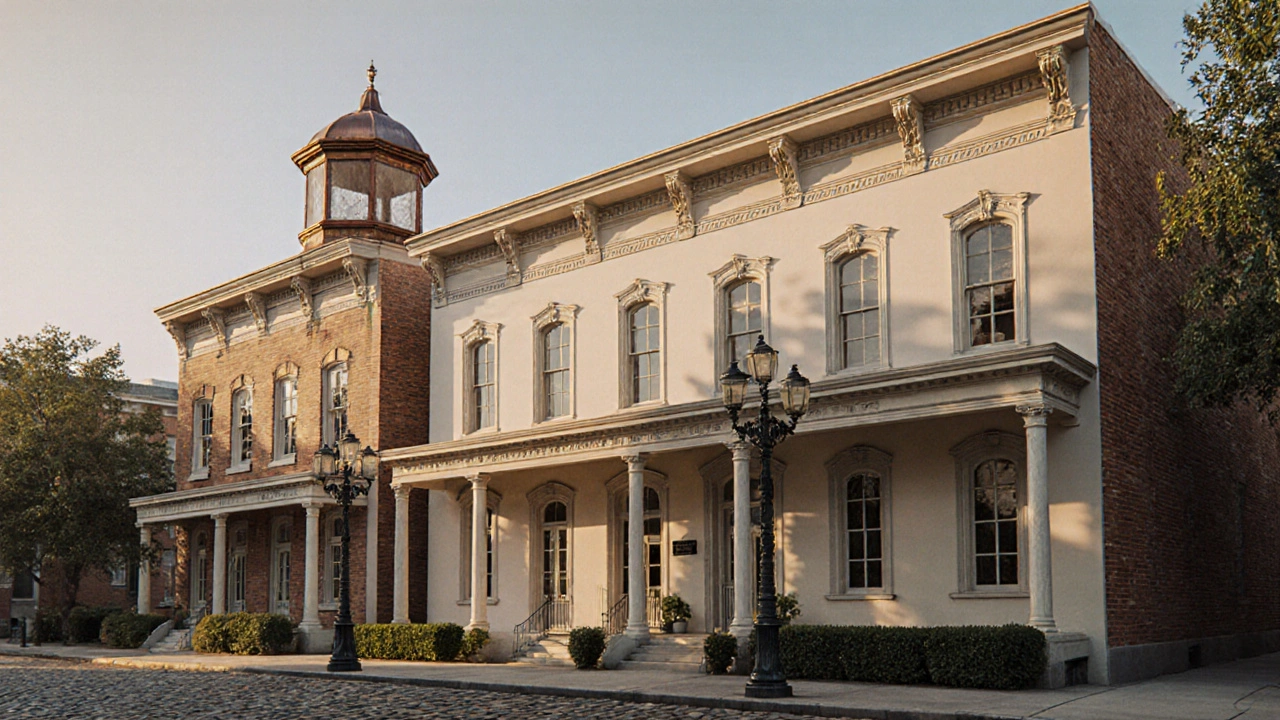Explore Italianate architecture's history, key features, famous examples, and modern design tips. Learn how this Victorian style blends form and function for timeless homes.
Architectural Elements: The Building Blocks of Design
When working with architectural elements, the basic components that shape a building’s look and feel. Also called building components, they determine structure, aesthetics, and function. Understanding these pieces helps you read any style, from classic to cutting‑edge. That’s why architectural elements matter to architects, designers, and anyone who loves buildings.
Why Knowing These Elements Helps
Renaissance architecture, a 15th‑century movement that revived classical symmetry and proportion introduced columns, pilasters, and ordered facades that still influence modern design. The movement shows how proportion as an element creates visual harmony. When you spot a balanced window rhythm or a regularly spaced cornice, you’re actually seeing the Renaissance way of treating size, scale, and spacing as core elements.
Baroque architecture, a dramatic 17th‑century style that emphasizes movement, contrast, and rich ornament pushes elements to the emotional extreme. Bold curvature, exaggerated cornices, and dynamic light play turn plain walls into storytelling surfaces. The baroque lesson is clear: texture, depth, and light become active elements, not just background.
Constructivist architecture, a Soviet‑era approach that treats structure as an expressive, functional element strips away ornament and lets raw material, geometry, and engineering speak for themselves. Here, a steel frame, concrete slab, or glass curtain wall is not hidden but celebrated as an element that defines space. The style proves that functional clarity can be an artistic statement.
These three movements illustrate how architectural elements encompass style, material, and spatial logic. An element can be a shape, a material, a color, or a way light interacts with a surface. Designers choose elements to solve problems: a low‑pitch roof sheds rain, a large window brings daylight, a decorative frieze signals cultural identity. When you combine the right elements, you get a building that works and feels right.
Beyond the big styles, many other traditions treat elements in unique ways. Gothic Revival, for instance, revives pointed arches and ribbed vaults to create vertical thrust, while modern high‑tech buildings showcase exposed steel and glass as structural elements. Each approach adds a layer to the overall vocabulary, letting architects mix and match to meet client needs, climate constraints, or aesthetic goals.
Now that you’ve got a clear picture of what architectural elements are, how they differ across eras, and why they matter, you’re ready to explore the deeper dives below. The articles that follow break down specific styles, offer design tips, and show real‑world examples—all built on the foundation of the elements we’ve just outlined.

